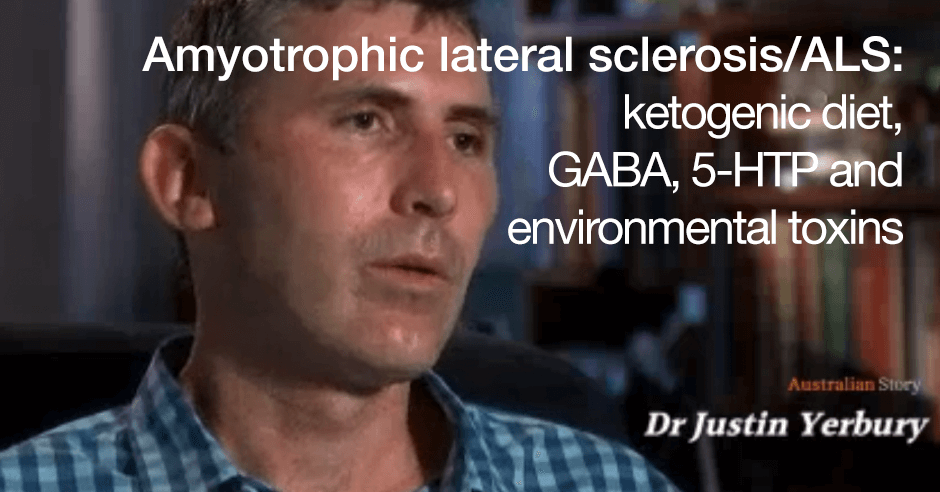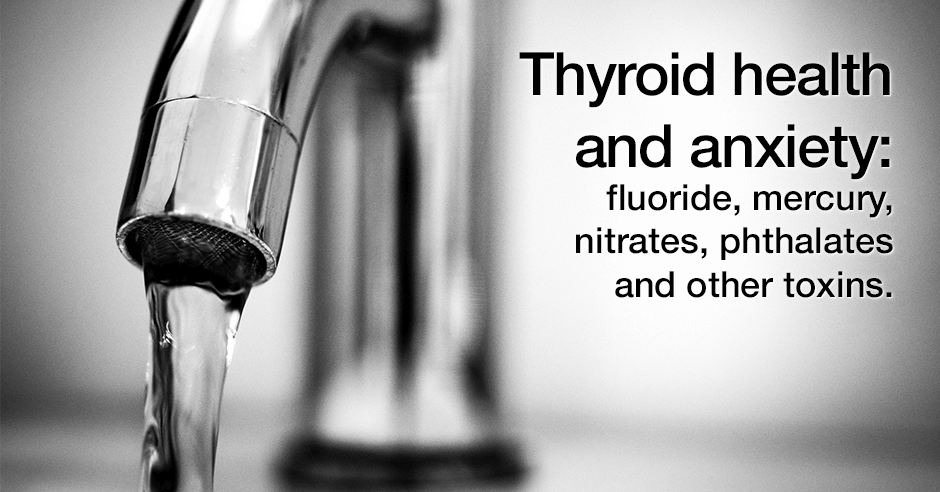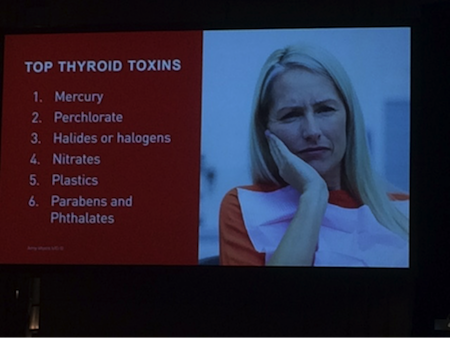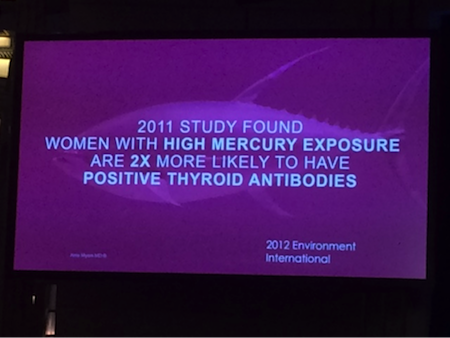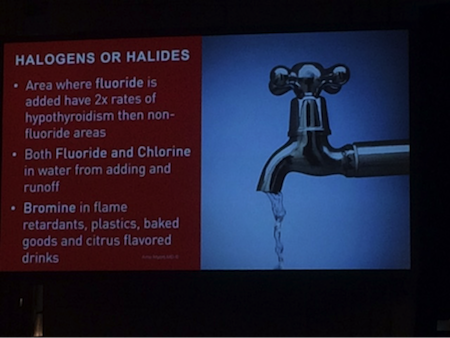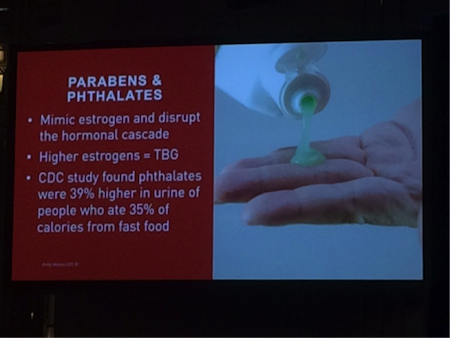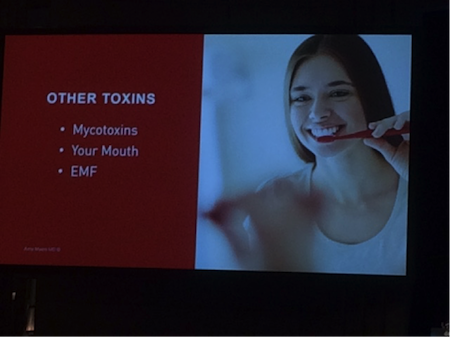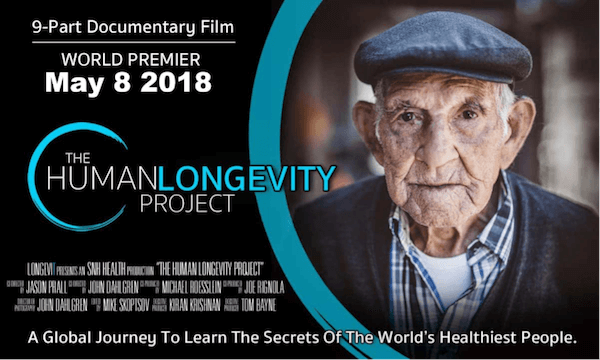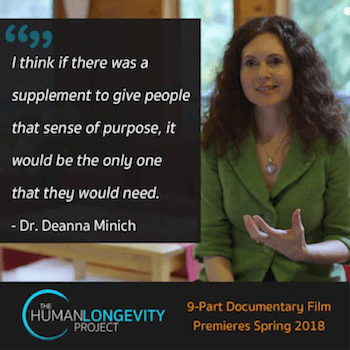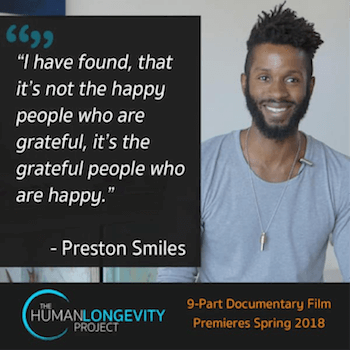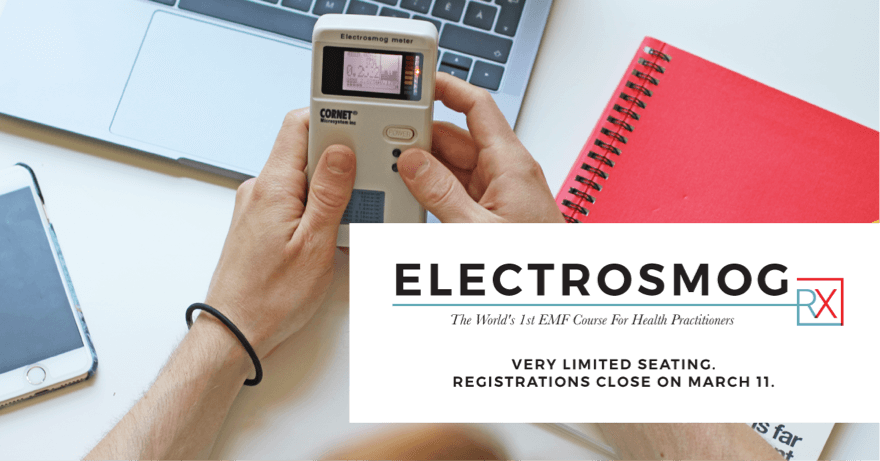
Earlier this month I let you know that the EMF practitioner training for the Electrosmog RX evergreen version now available. Nicolas Pineault is an investigative health journalist and the course creator.
As a quick reminder it covers: EMF Basics, EMF Science, EMF Symptomology, EMF Mitigation and EMF Resilience.
Today I’m sharing a few slides from the presentation material so you have a feel of what’s being covered (and to get you on board with the seriousness of EMF issues if you’re not yet ready to do the course or are not a practitioner since it is a practitioner-level course)
This training focuses on the clinical side of EMFs as an environmental factor contributing to ill health (including widespread neuropsychiatric effects) and includes critical information on what to ask your patients/clients to assess if they’re being over-exposed. And as you can see it’s heavily researched-based, which I love!
Here are a few relevant slides from the EMF Science webinar (and some of the references), where he covers how EMFs affect every cell in the body.
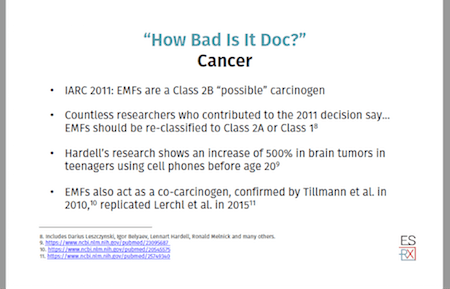
Cancer is one of the more recognized dangers of EMFs but “EMFs are still listed as a Class 2B ‘possible’ carcinogen and countless researchers who contributed to the 2011 decision say that EMFs should be re-classified to Class 2A or Class 1.” Hardell’s research
“shows an increase of 500% in brain tumors in teenagers using cell phones before age 20.” This article on The Environmental Health Trust site goes into this in more detail. This site is an excellent resource for all things EMF.
“EMFs also act as a co-carcinogen, confirmed by Tillmann in 2010, and replicated by Lerchl 2015.”
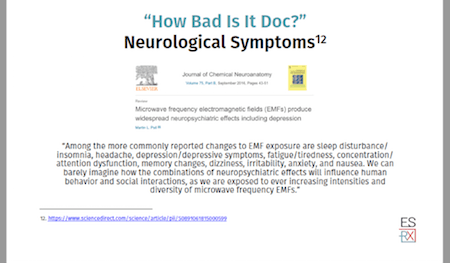
EMFs are also a factor in neurological and neuropsychiatric symptoms, as reported in this 2016 paper: Microwave frequency electromagnetic fields (EMFs) produce widespread neuropsychiatric effects including depression
Among the more commonly reported changes are sleep disturbance/insomnia, headache, depression/depressive symptoms, fatigue/tiredness, dysesthesia, concentration/attention dysfunction, memory changes, dizziness, irritability, loss of appetite/body weight, restlessness/anxiety, nausea, skin burning/tingling/dermographism and EEG changes.
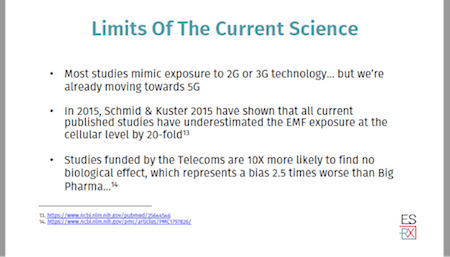
There are limits of the current science because “most studies mimic exposure to 2G or 3G technology but we’re already moving towards 5G. In 2015, Schmid and Kuster reported that all current published studies have underestimated the EMF exposure at the cellular level by 20-fold.”
The very disturbing fact is that “studies funded by the Telecoms are 10X more likely to find no biological effect, which represents a bias 2.5 times worse than Big Pharma.”
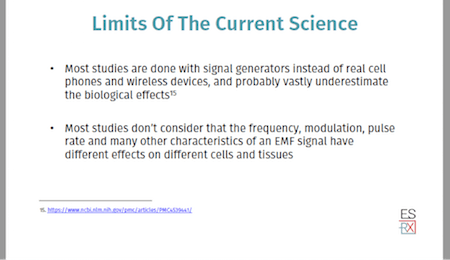
I was amazed to learn that “most studies are done with signal generators instead of real cell phones and wireless devices, and probably vastly underestimate the biological effects.”
More importantly, he shares that “most studies don’t consider that the frequency, modulation, pulse rate and many other characteristics of an EMF signal have different effects on different cells and tissues.
While experimental studies employing simulated EMF-emissions present a strong inconsistency among their results with less than 50% of them reporting effects, studies employing real mobile phone exposures demonstrate an almost 100% consistency in showing adverse effects. This consistency is in agreement with studies showing association with brain tumors, symptoms of unwellness, and declines in animal populations.
Nick shares these smart tips in the EMF Mitigation webinar:


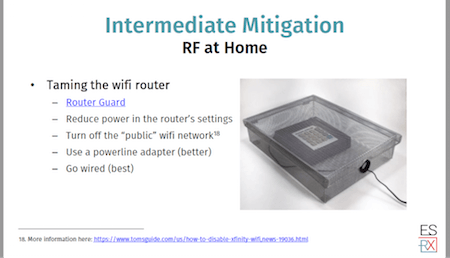
He also shares how to use EMF-blocking clothes and how to use grounding as a wonderful EMF mitigation and healing approach. I’m blown away by the power of grounding and will be sharing more in future blogs.
The webinar on EMF Resilience is also excellent, with so much that we can do from a nutritional point of view to make us stronger and help us heal when we are sensitive to the effects of EMFs.
If you missed the earlier announcement about this upcoming practitioner training you can read about the course and watch a short video presentation on EMFs by investigative health journalist and course creator Nicolas Pineault. It’s all on this blog: EMFs and how to help your electrosensitive clients/patients. As I’ve mentioned before I watched him present this live and was so impressed that I decided to take the course and I’m now urging other practitioners to take EMFs seriously!
And based on what I learned in the course, I’m speculating (and extrapolating from some of the research) that EMF overload may play a role in chronic anxiety, insomnia, benzodiazepine issues, SIBO, high cortisol and dietary oxalate issues in some susceptible individuals.
If you want to learn latest evidence-based, cutting-edge, credible information on how Electrosmog exposure affects your patients/clients, how to prevent EMF-related symptoms and illness, and how to support those clients/patients who have symptoms, then I highly recommend this course.
You will likely find you will benefit personally too. I am seeing huge improvements in my own health since making changes I’ve learned about. I discovered I have electromagnetic hypersensitivity!
Details and registration here for the practitioner Electrosmog RX evergreen training
Hope to see you in the private facebook group! This aspect was a big incentive for me to do the training rather than simply only reading his book (I did that too) – and it was invaluable and continues to be a place for excellent discussions and plenty of sharing!
For non-practitioners I highly recommend his new book – “The Non-Tinfoil Guide to EMFs: How to Fix Our Stupid Use of Technology” (my Amazon link) and please feel free to share this EMF practitioner training, ElectrosmogRX, with your own health practitioner
If you have comments or questions please share them below on the blog.
